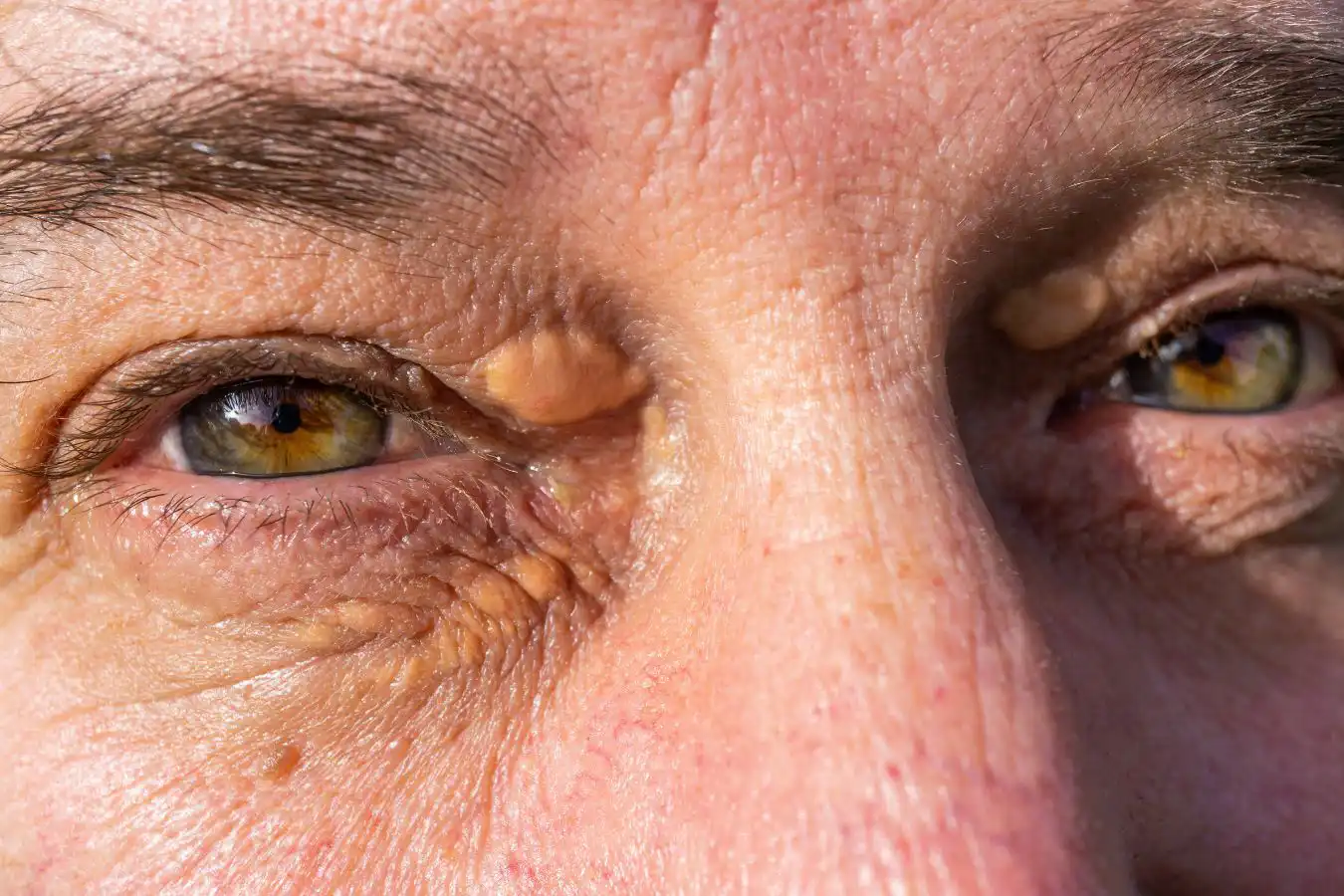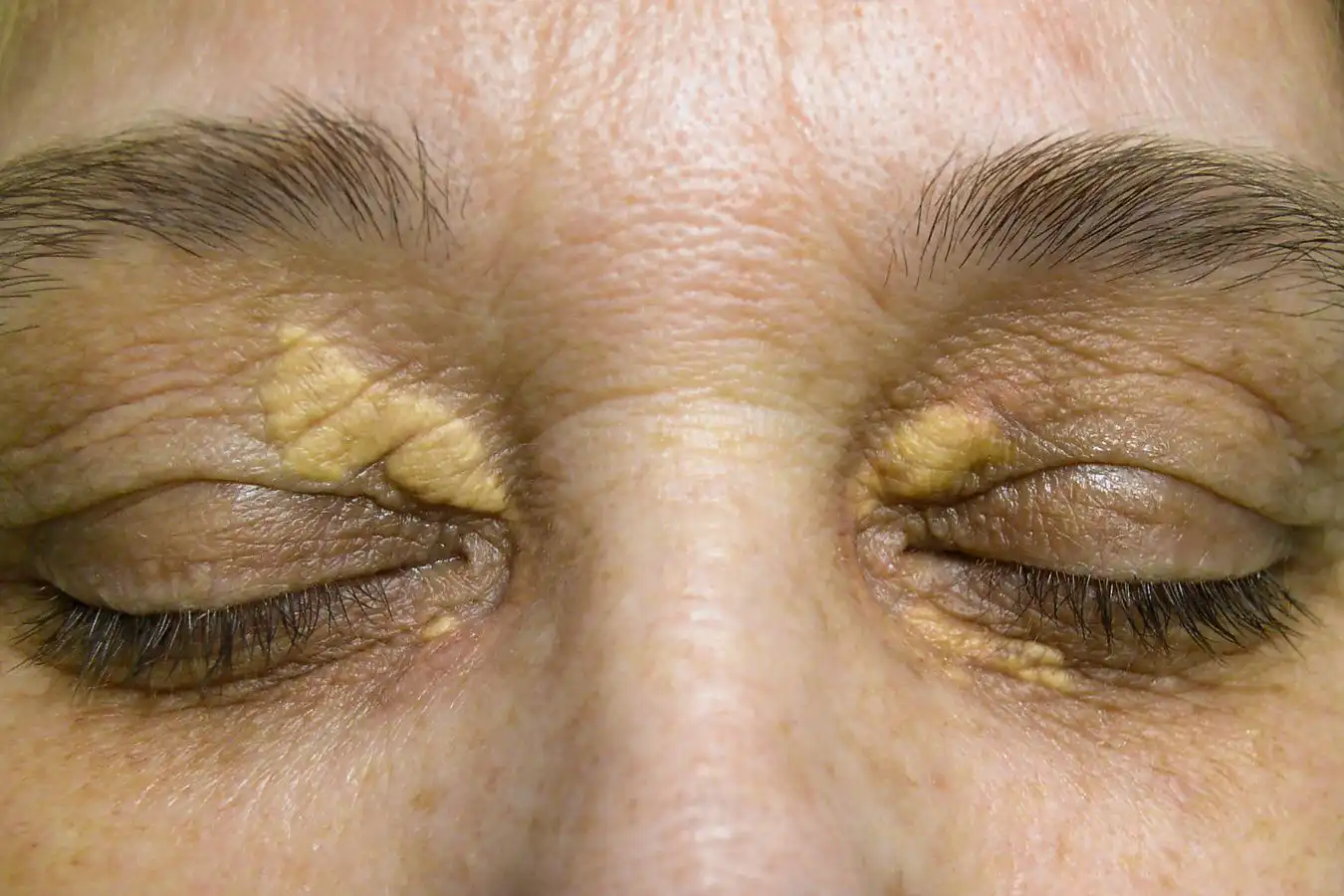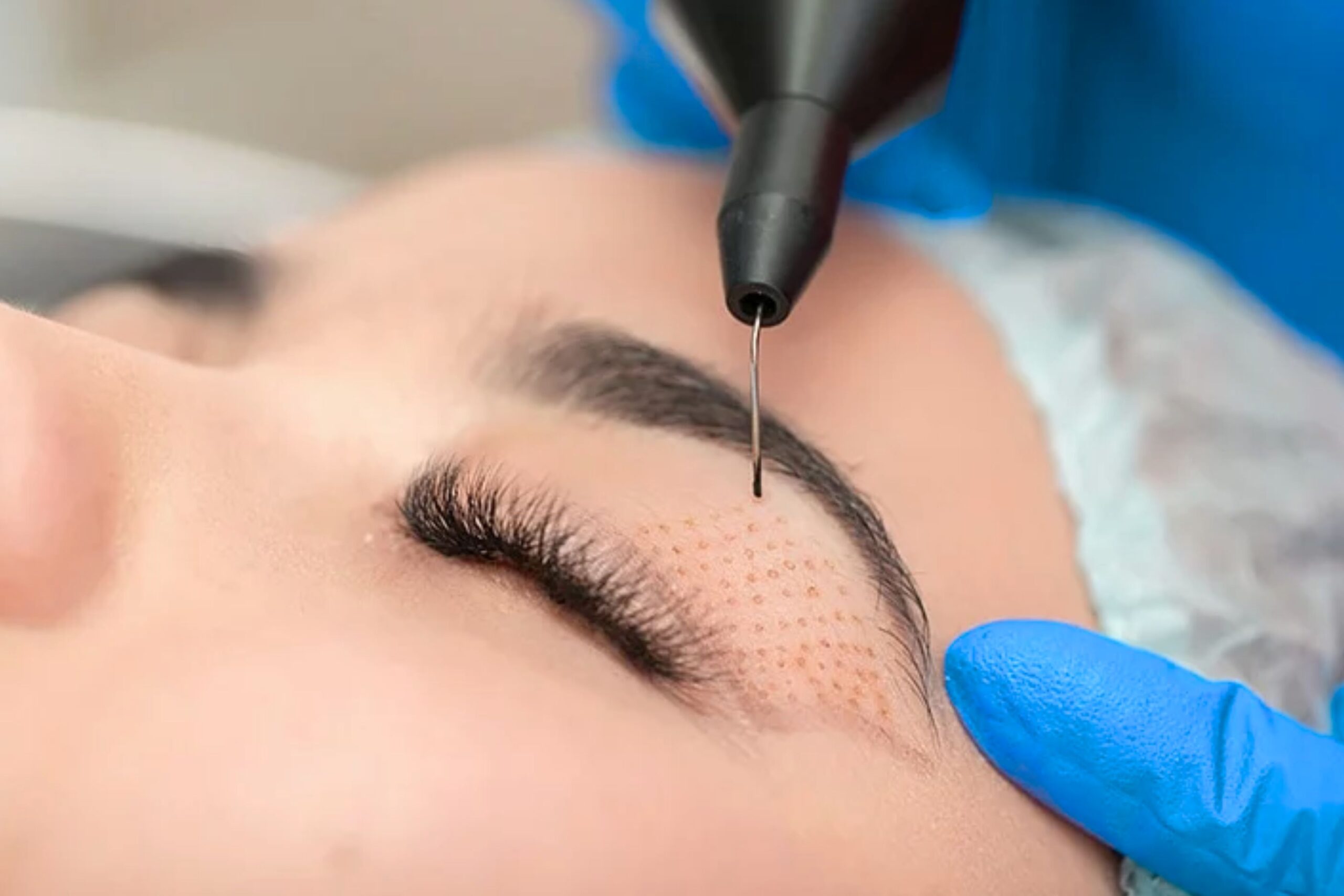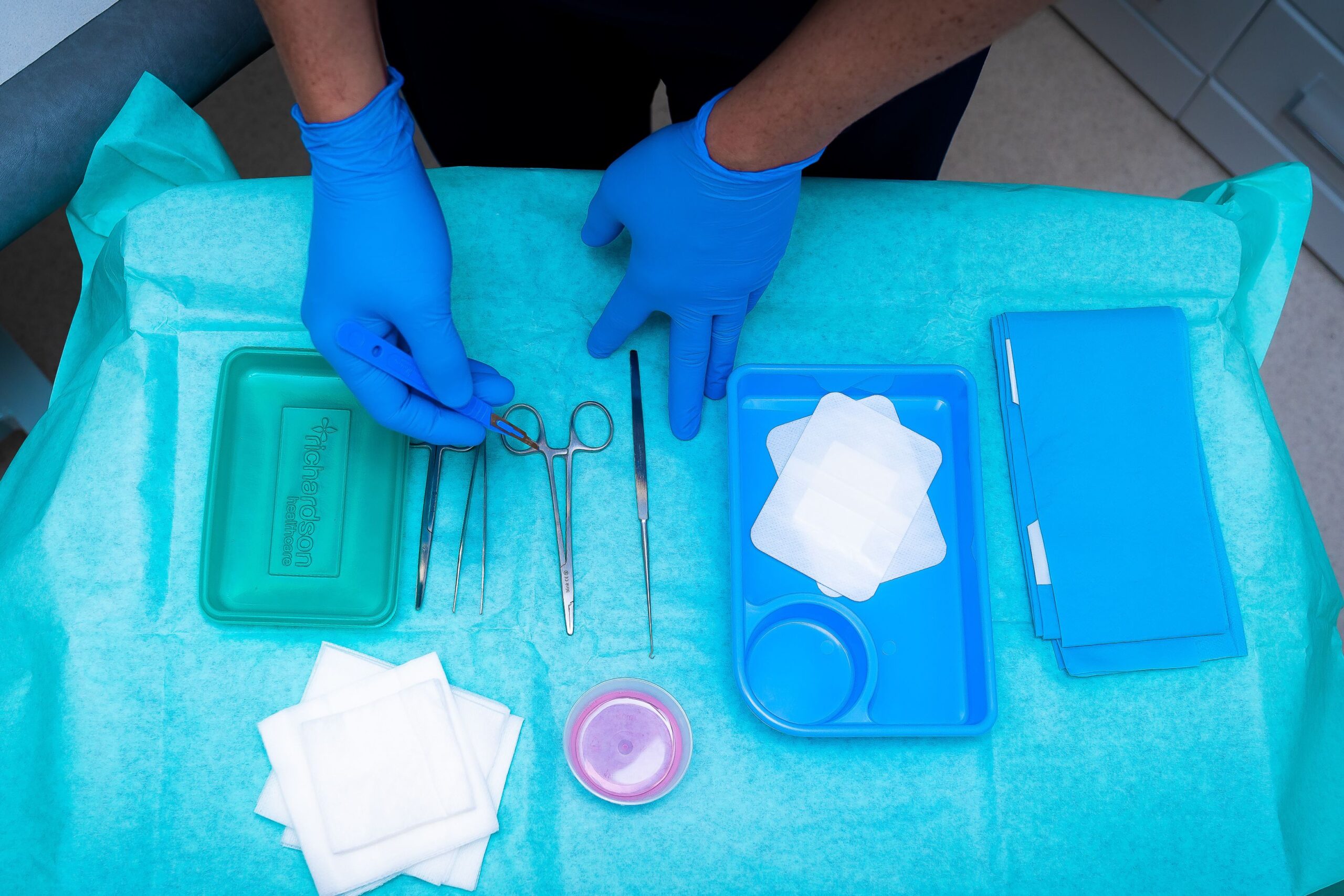
Xanthelasma Removal
Discover what causes Xanthelasma and how to tackle it effectively.
Our expert team provides personalised treatments, ranging from advanced procedures to specialised surgery, ensuring you effortlessly attain a rejuvenated, radiant look.
Remove Xanthelasma and restore your confidence with Freyja Medical.
What Causes Facial Xanthelasma?
Xanthelasma develops when cholesterol builds up in the skin, most commonly around the eyelids.
It can occur in people with high cholesterol or other lipid disorders, but it sometimes appears in those with normal cholesterol levels too. Factors such as genetics, certain medical conditions, and lifestyle can play a role.
While xanthelasma itself is harmless, it can be a sign of an underlying issue with cholesterol or cardiovascular health, which is why it’s important to seek medical advice alongside treatment.

Xanthelasma Removal Options
Hyfrecator / Plexr Plus
Hyfrecator and Plexr are minimally invasive techniques that use heat energy to gently break down and remove xanthelasma deposits without the need for surgical excision.
These methods are quick, effective, and require minimal downtime, making them a popular option for suitable cases.
Skin Surgery
Surgical excision is a precise and effective method for removing xanthelasma, particularly when the deposits are larger or deeper within the skin.
The procedure involves carefully cutting out the cholesterol deposits under local anaesthetic, followed by fine suturing to support healing and minimise scarring.
You will require a consultation with our consultant surgeon before booking treatment, where the most suitable approach for you will be advised to ensure the safest and most effective outcome.
What causes xanthelasma?
Xanthelasma occurs when fatty deposits, mainly cholesterol, build up beneath the surface of the skin, most often around the eyelids. In many cases, it is linked to high cholesterol levels or other lipid disorders, but it can also appear in people with normal cholesterol. Contributing factors may include genetics, liver disease, diabetes, thyroid problems, and certain medications that affect fat metabolism. Lifestyle factors such as diet, smoking, and lack of exercise can also play a role in raising cholesterol and increasing the likelihood of developing xanthelasma. Although the deposits themselves are harmless, they may indicate an underlying issue with cholesterol or cardiovascular health, which makes it important to have your general health assessed as part of your treatment journey.
Can xanthelasma be treated?
Yes — xanthelasma can be safely and effectively treated. While cholesterol deposits will not disappear on their own, there are several medical techniques that can remove them and improve the appearance of the eyelids.
Treatment options include surgical excision, where the affected tissue is carefully removed under local anaesthetic, and minimally invasive methods such as Hyfrecator or Plexr, which use controlled heat energy to break down the deposits without the need for cutting. The choice of treatment depends on the size, depth, and number of lesions, as well as your individual needs and preferences.
It is important to note that treating xanthelasma addresses the cosmetic and physical concern, but it does not treat the underlying cause — high cholesterol or lipid imbalance — which may need separate medical management.
You will require a consultation with our consultant surgeon before booking treatment, where the most suitable approach for you will be advised to ensure the safest and most effective outcome.
Are the treatments painful?
Xanthelasma removal treatments are generally well tolerated and not considered painful. For surgical excision, a local anaesthetic is used to completely numb the area, so you should not feel pain during the procedure, only mild pressure or movement. With Hyfrecator or Plexr, patients may feel a brief stinging or warming sensation as the energy is applied, but this is usually mild and short-lived. After treatment, some people experience minor discomfort, redness, or swelling in the treated area, which typically settles within a few days. Over-the-counter pain relief is rarely needed, but can be taken if required. You will be given full aftercare advice to keep you comfortable and ensure the best healing and cosmetic outcome.
Are the treatments safe?
Yes — when carried out by an experienced medical professional, xanthelasma removal is considered very safe. At Freyja Medical, all procedures are performed by consultant surgeons with dermatology expertise, ensuring the highest level of precision and care. Surgical excision and Hyfrecator/Plexr techniques are both well-established methods with excellent safety records. As with any medical procedure, there are some risks, such as minor scarring, changes in skin pigmentation, or temporary swelling, but these are uncommon and will be fully discussed with you during your consultation. Importantly, we only recommend treatment if it is safe and appropriate for you. You will require a consultation with our consultant surgeon before booking treatment, where the most suitable approach for you will be advised to ensure the safest and most effective outcome.
Are there any side effects from the treatments?
Like all medical procedures, xanthelasma removal can carry some temporary side effects, although these are usually mild and settle quickly. After surgical excision, you may experience redness, swelling, bruising, or tenderness around the treated area for a few days, and there is a small risk of scarring or changes in skin texture. With Hyfrecator or Plexr treatments, it is common to notice slight redness, swelling, or small scabs where the cholesterol deposits were treated — these typically heal within one to two weeks. In rare cases, there may be changes in pigmentation (lightening or darkening of the skin) in the treated area. Your consultant surgeon will explain all potential risks and side effects in detail during your consultation and provide tailored aftercare instructions to support smooth healing and the best possible cosmetic outcome.
How much do the treatments cost?
The cost of xanthelasma treatments can vary depending on the type of treatment used and the severity of the condition. Click here to view our price list.
Restore Confidence with Freyja Medical
Schedule your consultation today!



